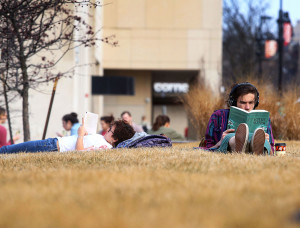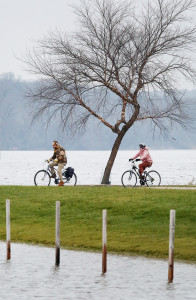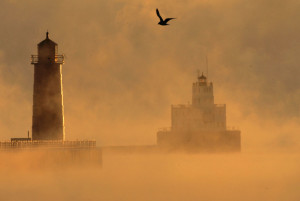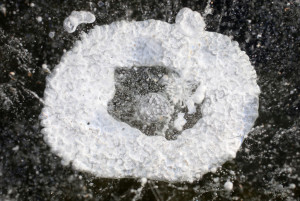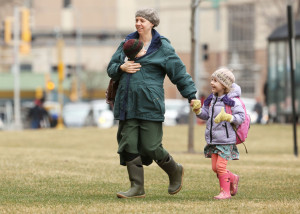
Lesley Davidson, of Madison, shelters her 8-month-old daughter, Eleanor, from the wind as she walks with her 4-year-old daughter, Lily, to the Chazen Museum of Art on the UW-Madison campus on Wednesday. (Photo credit: Amber Arnold, State Journal)
Our windy Wednesday last week was a notable departure from a winter without many high-wind events.
The strong winds from Tuesday and Wednesday were a result of the passage of an intensifying low-pressure center (mid-latitude cyclone) nearly directly over Madison overnight Tuesday into Wednesday.
The fundamental circumstance that forces the wind to blow is the existence of horizontal differences in pressure from one location to another. Such differences are known as pressure gradients.
Since mid-latitude cyclones have lowest pressure at their centers, regions within a few hundred miles of the storm center have strong pressure gradients and, therefore, strong winds.
If, as was the case on Tuesday night and Wednesday, the mid-latitude cyclone is intensifying, the central pressure continues to get lower. This serves to strengthen the pressure gradients associated with the storm and, thus, increases the wind speeds. That was precisely the situation that led to our strong wind event on Wednesday.
Also, since the force that is imposed on objects caught in the wind varies as the square of the wind speed, the destructive power of 30 mph winds (such as we had on Wednesday) is nine times stronger than for more run-of-the-mill winds of 10 mph. Thus, many locations endured broken tree limbs and other such damage.
The force of the wind also depends on the surface area of the objects through which the wind is blowing.
Had the same trees that lost limbs on Wednesday been in full leaf, the area available to catch the wind would have been greatly increased and more than likely much more damage would have resulted.

